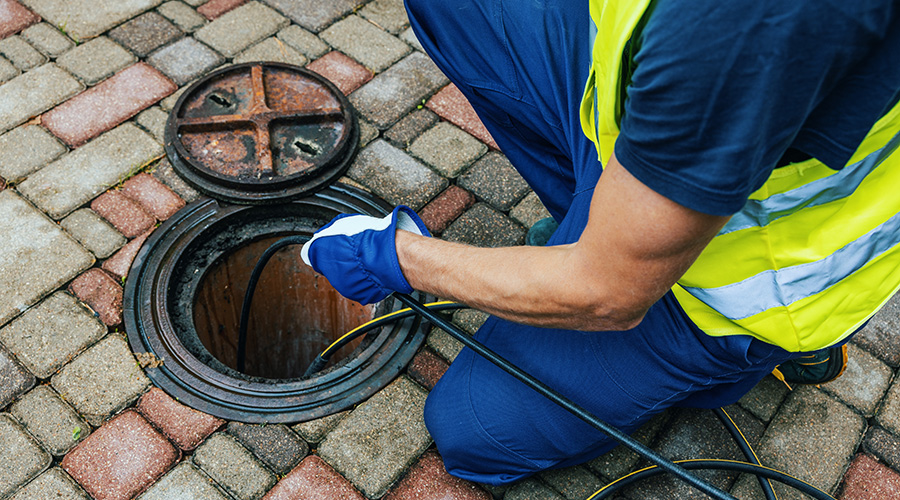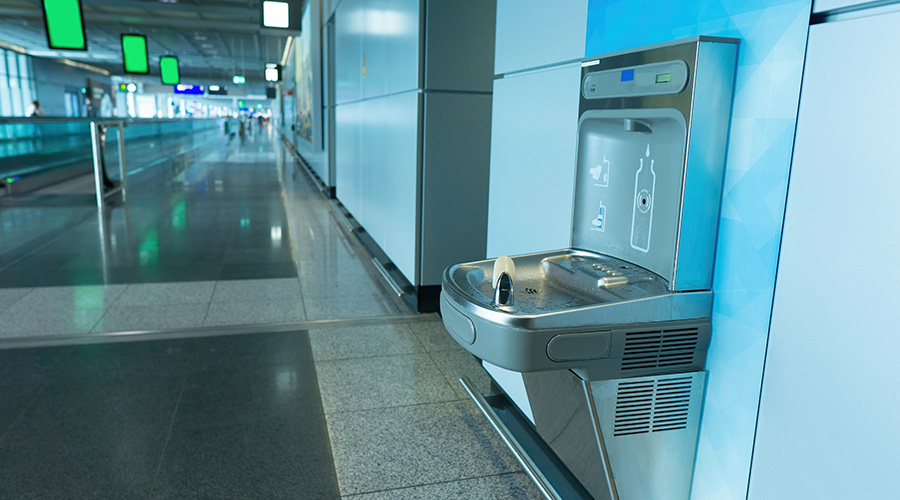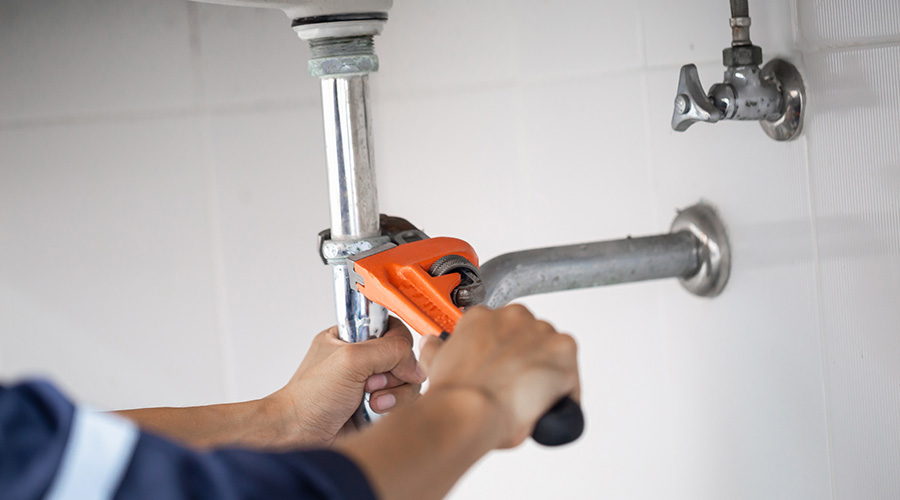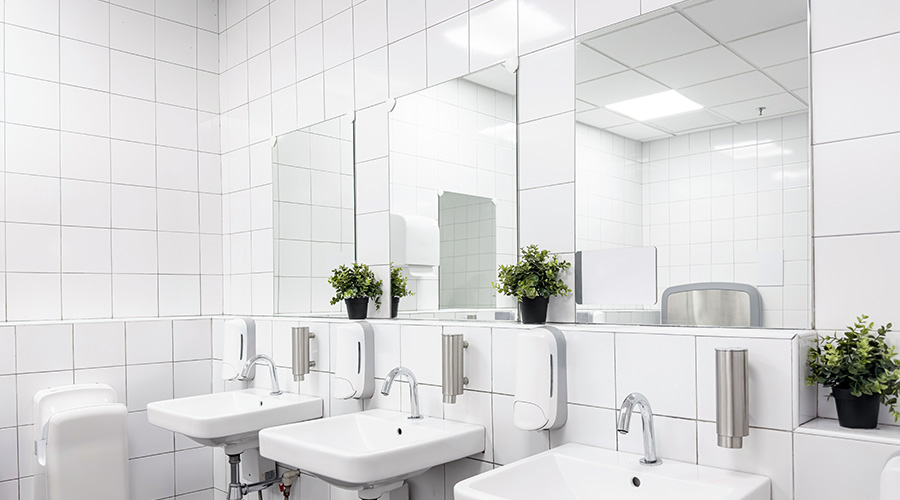Plumbing Upgrade Success
Making all the right decisions on timing, technology applications, design and post-installation ensures projects meet goals and expectations
Restroom plumbing system upgrades can have two major benefits for institutional and commercial facilities. They can provide greater access to visitors and occupants, and they can help control costs related to water use — a benefit that is increasingly important for all facilities but especially those in Western states due to dry conditions.
By exploring the key phases of the plumbing upgrade process, managers can find ways to influence important decisions related to system design and product specification, with a key goal being efficient long-term maintenance of the finished project.
A Matter of Timing
Certainly, managers want to complete an upgrade before the needed work results in an emergency situation for the facility. Any time an emergency occurs, very unhappy restroom visitors are the result. Also, safety and health issues can arise if sewers back up or toilets overflow or leak waste water, causing dampness where bacteria can form.
Plumbing upgrade projects often are complex, and some type of complications seem to arise. Among the most common mistakes that facilities make in determining the timing and scope of a project are these:
-
Deferring the upgrade until it is an emergency. Often, in the haste to get a problem resolved, managers turn to a temporary solution. But this approach almost always creates more maintenance requirements, higher costs and more disruption for occupants and visitors.
-
Letting deferred regulatory upgrades accumulate until they become unmanageable. With tight budgets more the rule than the exception these days, it will become increasingly harder to catch up with the growing backlog later.
-
Considering only the first cost of the project and materials while ignoring post-installation operating costs. The lowest-cost components used in plumbing upgrades also tend to be those that wear out or fail soonest. Using low-cost materials is a short-term solution that generally ends up costing an organization more in the long run.
-
Using add-ons that exceed system capacity. If the goal of the remodeling is to add restroom capacity, managers must avoid overloading a facility’s water and sewer system, which might have deteriorated or might not have been designed for added capacity.
-
Letting inventories of key spare parts become depleted from inventory. The advantage of planning ahead for plumbing upgrades is that workers have all the materials available to them when needed. If a repair arises from an emergency, there is a good chance that replacements are not available to get every job done.
-
Not managing performance so that more actual hours are required to get every job done.
Design Decisions
One central goal that managers should emphasize during the design and specification phases is system maintainability, which seeks to ensure that upgraded facilities and systems are accessible and repairable. Any pipe fitter or plumber who has had to repair piping or fixtures sandwiched between or underneath obstructions, with no room for a tool, knows how a lack of maintenance access can affect job time.
For example, some sinks are designed so that the faucet nuts — the nuts under the sink that hold the faucet tightly to the sink surface — are up underneath the sink behind the drain and trap piping. They require an open-ended wrench to turn, and the wrench’s jaws must be perpendicular to its handle.
In a new installation, a faucet can be installed on a sink before the sink is installed on the wall. But if a faucet must be replaced, a special wrench might be needed for this purpose. Even with this special wrench, access can be so limited that workers can get very little leverage to turn a nut and can only turn it a few degrees at a time. One result is longer repair times.
To ensure during the design process that restroom upgrades comply with current regulations, guidelines and standards, managers can consult the latest building codes or have an architectural and engineering firm participate during the design process. Among the more important areas to cover are guidelines in the Americans with Disabilities Act, regulations from the Occupational Safety and Health Administration and the U.S. Environmental Protection Agency, and state and local building codes.
Besides covering accessibility and safety and health requirements for visitors and occupants, many regulations and guidelines also contain measures that are designed to conserve water, power and other valuable resources. Conserving water has figured prominently in the design of the latest restroom fixtures.
The amount of water that is used in a facility is a function of both flow rate and flow time. Many water closets, urinals, lavatories and shower heads now are designed for lower water flow — in some cases, one-half the flow rate of previous designs.
Tapping into Technology
Recent generations of plumbing fixtures and components feature technology designed to reduce water use, extend performance life and minimize maintenance. Managers should consider these products in planning upgrade projects:
Water filters. Water filters can reduce stains on fixtures and corrosion in piping. Stains result from minerals or other chemicals in the water, such as iron, sulfur, chlorine and help alleviate low pH and turbidity, or suspended solids in water. Iron leaves a rust-colored stain on sinks and toilets. Sulfur causes a strong odor and can corrode pipes, drains and appliances that use water. Low-pH water often leaves a bluish-green stain on copper pipes and corrodes pipes and drains. Turbidity can make water cloudy and foul pipes and drains.
Low-flow fittings. Investing in low-flow aerator nozzles for sinks reduces water use. The volume consumed varies widely among fixtures. For example, up-to-date sink faucets with low-flow aerators can cut water flow rates by one-half, to 0.5 gallons per minute (gpm).
Specifying battery-operated, no-hands faucets also not only lowers water use. It also creates a healthier environment by eliminating the possible transfer of germs from handling faucets. No-hands faucets deliver water only when a user places hands under the faucet and breaks a sensor beam. When the beam is restored, the sensor turns off the flow.
Low-flow flush valves. Low-flow designs for urinals and toilets are available in flush valves with battery-operated, no-hands operation. Urinal flush-valve volume varies from 1-1.5 gpm, a 50 percent variation. Toilet flush-valve volumes vary from 1.6-4.5 gpm, a 180 percent variation. By sizing valves’ flow rates for optimum performance, managers can save significantly on the water bill.
One caveat: The goal is optimum flow, not minimum flow. A common complaint heard is that low-flow fixtures are not strong enough and, in fact, can cause pipe stoppages by failing to flush completely. Pending legislation would remove mandatory low-flow rates, so managers should check local codes and talk to building inspectors before finalizing specifications.
Managers also can generate water savings and improve cleanliness at the same time by retrofitting existing valves with the automatic, battery-operated, vandal-resistant type, or replacing the old manual valves with the new automatic type.
Keeping it Flowing
Maintenance and custodial tasks ensure that completed projects continue to perform as designed.
As each new round of regulations takes effect, managers should implement a maintenance program that aims to keep the finished project in top shape.
Daily custodial care of the restroom and equipment is essential. Each day, housekeeping crews should follow a planned routine to ensure that all toilets, sinks, flush valves, dispensers, mirrors, light fixtures, stalls, wells and floors are spotless.
They also should ensure that all low batteries and burned out lights are replaced, that all waste containers are emptied before they are full and then cleaned, and that all paper and soap dispensers are full.
Most importantly, maintenance managers must use weekly performance reports to ensure that proper staffing levels, cleaning methods and equipment are used; that maintenance crews use all resources are productively and cost-effectively, and that the system upgrade meets both function and cost objectives.
The Cost of a Leak
Quantifying the savings that a plumbing upgrade could generate is essential for approval. Consider this method for determining the savings:
- Read and record the water-meter reading for each area at a time when no water is used.
- Wait two hours, then return to read and record the meter readings.
- Multiply the difference by 4,380 — 8,670 hours in a year, divided by two for the two-hour sample.
- Multiply the result by the water and sewer rate to figure the cost from leaks.
- The gallons lost in two hours equals 40, or the total of all meters.
- The gallons lost per year equals 40 multiplied by 4,380, or 175,200 gallons.
- The total annual cost of leaks equals 175.2 — annual leakage in thousands of gallons — multiplied by $6.50 per 1,000 gallons, which is the combined sewer and water rates, or $1,139.
For example:
By eliminating this loss, a manager could offset $1,139 of the upgrade cost simply by stopping leaks. Add to that figure the 1 million gallons saved with, for example, 22 waterless urinals in a university — 1 million divided by 1,000 multiplied by $6.50 equals $6,500 — and the result is more than $7,600 that managers could spend on an upgrade without adding to the budget.
|
Related Topics:











